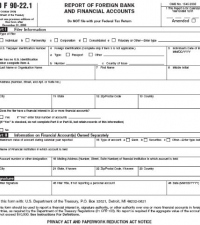Pension Plans in the USA

Social Security is the federal program that provide funds for many social welfare and social insurance programs. Pertaining to retirement, these include: Federal Old-Age, Survivors, and Disability Insurance and Supplemental Security Income (SSI).
For example, Mr. Smith would have his earnings tracked throughout his career. The Social Security Administration uses a number assigned to each citizen, known as your social security number (SSN), to track these earnings. How much Mr. Smith makes during his career helps to determine the monthly benefit which he will be entitled to upon retirement. This amount is known as the Primary Insurance Amount (PIA), the average of the highest 35 years of the worker's covered earnings (before deduction for FICA).
Future of Social Security
There have been very animated debates about the future of Social Security in the United States as benefits are not guaranteed. The program is funded through dedicated payroll taxes called Federal Insurance Contributions Act (FICA). Benefits have been paid almost entirely by using revenue from payroll taxes earning the name "pay-as-you-go". However, in the near future payroll tax revenue is projected to be insufficient to cover Social Security benefits. At this time, the system will begin to withdraw money from the Social Security Trust Fund. By dollars paid, the U.S. Social Security program is the largest government program in the world and the single greatest expenditure in the federal budget. Social Security supports about 40% of all Americans age 65 or older. Proposals to privatize the fund have been hotly debated, most notably during the Bill Clinton and George W. Bush presidencies.
Retirement Plan
A pension is a contract for a fixed sum to be paid regularly to a person, typically following retirement from service. Known as "retirement plans" in the USA, they may be set up by employers, insurance companies, the government or other institutions such as employer associations or trade unions. A recipient of a retirement pension is known as a pensioner or retiree. Retirement plans in the U.S. are defined in tax terms by the Internal Revenue Service (IRS).
Age of Eligibility
The basic age of eligibility is 65, although this is gradually increasing to 67. However, full retirement benefits depend on a retiree's year of birth:
- Those born before 1938 have a normal retirement age of 65. This eligibility increases by two months for each ensuing year of birth until 1943.
- After this year of birth until the year of birth of 1955, the limit is standard.
- After 1955 the retirement age again increases by two months for each year.
It is possible to start benefits before normal retirement age at a reduced benefit. This reduction is 5/9 of 1% for each month (up to 36 months) prior to normal retirement age, and then 5/12 of 1% for each additional month. This formula gives an 80% benefit at age 62 for a worker with a normal retirement age of 65, a 75% benefit at age 62 for a worker with a normal retirement age of 66, and a 70% benefit at age 62 for a worker with a normal retirement age of 67.
It is also possible to delay starting retirement benefits. Retirement credits increase their benefit until they reach age 70.
How to Apply
Applying for Social Security retirement benefits is very straight-forward. You may apply online or by walking into your local Social Security office.
Amount of Benefits
If Mr. Smith retires at 65 and has 42 years with some Social Security covered earnings, he could be eligible for as much $1,615 per month.
However, the benefits are complicated and may be compromised by many factors including if there is a spouse, government employment, and other variables. To calculate your own benefits, use the Retirement Estimator.
Special minimum benefits are offered to certain individuals who've had long periods of relatively low earnings. To qualify for such benefits, a person must have at least 11 years of coverage. To earn a year of coverage, a person must earn at least a certain proportion (25 percent for years before 1991, and 15 percent for years after 1990) of the "old-law" contribution and benefit base. Tables showing the range of special minimum primary insurance amounts and corresponding maximum family benefit amounts are available.
Private Retirement Plans
Defined Contribution Plan in America
A defined contribution plan is an employer-sponsored plan with an individual account for each participant. The accrued benefit from such a plan is solely attributable to contributions made into an individual account and investment gains on those funds, less any losses and expense charges. The contributions are invested and the returns on the investment are credited to or deducted from the individual's account.
Upon retirement, the account provides retirement benefits, most often through the purchase of an annuity. This is the dominant form of plan in the private sector. Money is contributed by the employer and directly deducted from the employee's salary. Employee contribution may be matched by the company. The amount deducted will be monitored by the IRS.
Examples of Defined contribution plan include Individual Retirement Account (IRA), 401(k), and profit sharing plans. The participant is responsible for selecting the types of investments to make. They may choose a small number of pre-determined mutual funds, individual stocks, or other securities. The funds in such plans may not be withdrawn without penalty until the investor reaches retirement age.
The most popular is the 401K, a retirement plan that allows employees to contribute a certain percentage of wages earned into a tax-deferred account to save and invest for retirement. Some employers offer participants matching funds as part of a benefits package or company incentive.
For how this would work for an individual interested in investing in a 401K, let's use the example of a Mr. Smith:
Mr. Smith is paid $40,000 annually. His company offers a 401K program which he enrolls in and is able to contribute 20% of his salary. Mr. Smith's company will also contribute to their plan at 50% of every dollar he contributes up to 6 percent of his salary.
This makes Mr. Smith's yearly contribution $8,000 ($40,000 x 20%).
Mr. Smith's employer's contribution would therefore be $1,200 ( $40,000 x 6% x .5 ) per year.
However, it is possible to lose money in the long term. If Mr. Smith bought shares of a stock fund and it loses money, so does Mr. Smith. There is more risk with these types of funds, and hopefully more rewards.
Defined Benefit Plans in America
A defined benefit plan pays a benefit that will be paid upon retirement. A monthly benefit is allotted equal to the number of years worked multiplied by the member's salary at retirement multiplied by a factor known as the accrual rate. At a minimum, benefits are payable as a Single Life Annuity (SLA) for single participants or as a Qualified Joint and Survivor Annuity (QJSA) for married participants. These funds are paid at retirement and may be adjusted for an earlier or later start. A lump sum distribution may be available in some cases.
Defined benefit plans may be either funded or unfunded.
In a funded plan, contributions from the employer and participants are invested into a trust fund dedicated solely to paying benefits to retirees. The future returns on the investments is not known in advance, so there is no guarantee that a given level of contributions will meet future obligations. Therefore, fund assets and liabilities are regularly reviewed by an actuary in a process known as valuation. A defined benefit plan is required to maintain adequate funding if it is to remain qualified.
In an unfunded plan, no funds are set aside for the specific purpose of paying benefits. The benefits to be paid are met immediately by contributions to the plan or by general assets. Most government-run retirement plans, including Social Security, are unfunded, with benefits being paid directly out of current taxes and Social Security contributions.
For example:
Mr. Smith makes $50,000 as an average salary (based on the best 5 years of earnings)
x 25 years he invested in the plan
x 0.02 (an example fixed percentage of 2%)
= $25,000 per year in pension
Hybrid and Cash Balance Plans
Hybrid plans combine the positives of defined benefit and defined contribution plans. They are treated as defined benefit plans for tax, accounting, and regulatory purposes. The investment risk is also shouldered by the plan sponsor. However, like a defined contribution plan, benefits are expressed in the terms of a notional account balance, and are usually paid as cash balances upon termination of employment. A typical hybrid design is the Cash Balance Plan, where the employee's notional account balance grows by a defined rate of interest and annual employer contribution.
Expat Benefits
Expats in the US may pay into a private pension plan like a 401K if they are employed with a US company that offers that benefit. They may also be eligible for social security if they live and work in the United States and pay taxes. Expats may also be eligible for pension plans in their own country, as dual tax agreements are common.
American expats abroad are eligible for their private pension plan regardless of where they are currently located. U.S. Social Security extends to American citizens and U.S. resident aliens employed abroad by American employers without regard to the duration of an employee's foreign assignment, and even if the employee has been hired abroad. For more information on these agreements and to find what countries are eligible, go to the U.S. International Social Security Agreements.
- My Life Abroad -
A selection of expat stories

"A fun compulsive read!"
J. Matcham, Amazon
"I strongly advise people ready to live abroad to read this book!"
Patrice, Amazon

 How to file an Individual FBAR
How to file an Individual FBAR How exchange rates can affect how you pay for a property overseas
How exchange rates can affect how you pay for a property overseas What are the Benefits of using a Broker to Manage Regular Overseas Payments?
What are the Benefits of using a Broker to Manage Regular Overseas Payments? Fexco payment solutions
Fexco payment solutions Covering medical expenses in the US with insurance
Covering medical expenses in the US with insurance Cost of Studying in the USA for International Students
Cost of Studying in the USA for International Students